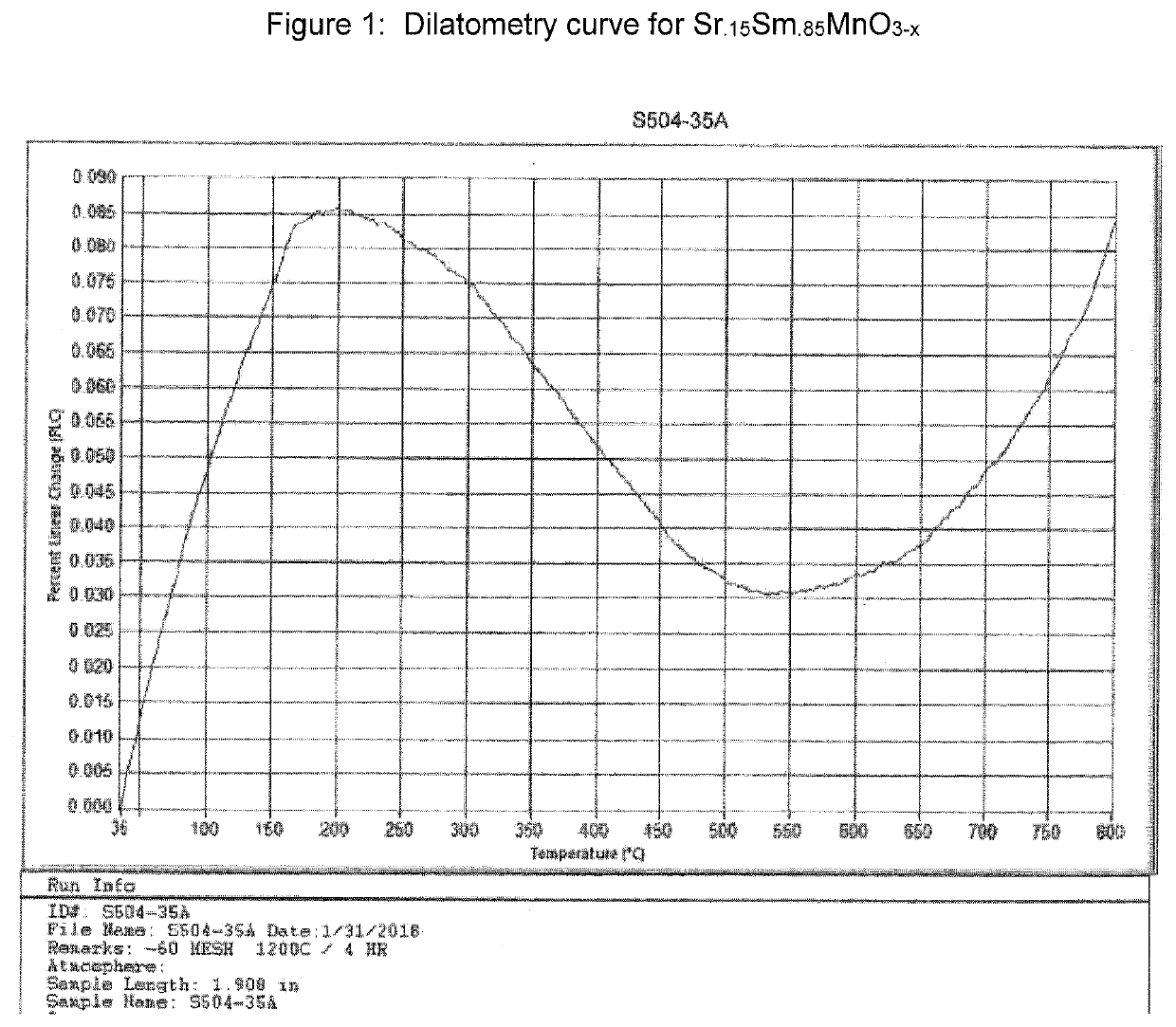Dark-Colored, Low-Expansion Fillers
a filler, low-expansion technology, applied in the field of glass frit, can solve the problems of enamel deformation, affecting the properties of enamel, and deformation of the bond between the enamel and the substrate,
- Summary
- Abstract
- Description
- Claims
- Application Information
AI Technical Summary
Benefits of technology
Problems solved by technology
Method used
Image
Examples
examples
[0034]Table 4 shows the compositions of PBrookite-structured colored CTE modifier examples. In examples 1-11, the raw materials were intimately mixed and the intimate mixture was fired at high temperature to form the colored CTE modifiers. Comparative example 1 was fired at 1450° C. for 60 hours to produce phase pure material. Partial substitution of Al with Fe, as in Examples 2 and 3, could be used to lower the firing temperature needed for synthesis to the range of 1350 to 1400° C. Substitutions of Cr for Al in any proportion without co-substitutions did not result in the formation of the PBrookite structure, as in Example 5. Provided that Al and Fe are present, Cr, Mn and Co can be added in attempts to neutralize the brown color of the materials from Examples 2 and 3. These doubly substituted trials appear as Examples 6 to 11 in Table 4.
TABLE 4Pseudo-Brookite ExamplesExampleFormulationSingle PhaseColor1-comparativeAl2TiO5YesWhite2Al1.5Fe0.5TiO5YesBrown3AlFeTiO5YesBrown4Fe2TiO5Alm...
PUM
| Property | Measurement | Unit |
|---|---|---|
| wt. % | aaaaa | aaaaa |
| wt % | aaaaa | aaaaa |
| CTE | aaaaa | aaaaa |
Abstract
Description
Claims
Application Information
 Login to View More
Login to View More - R&D
- Intellectual Property
- Life Sciences
- Materials
- Tech Scout
- Unparalleled Data Quality
- Higher Quality Content
- 60% Fewer Hallucinations
Browse by: Latest US Patents, China's latest patents, Technical Efficacy Thesaurus, Application Domain, Technology Topic, Popular Technical Reports.
© 2025 PatSnap. All rights reserved.Legal|Privacy policy|Modern Slavery Act Transparency Statement|Sitemap|About US| Contact US: help@patsnap.com

